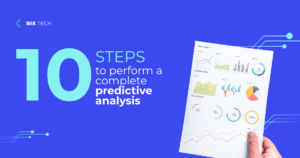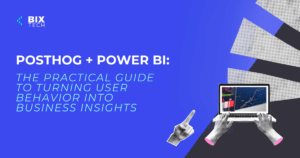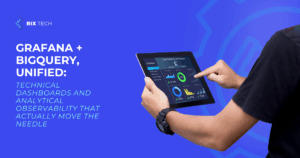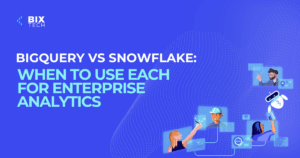Why the Second Semester of 2025 Is the Perfect Time to Launch Your Data Science Project

Sales Development Representative and excited about connecting people
As we move deeper into 2025, businesses across every sector are facing rapid technological change, fierce competition, and a growing demand for smarter, data-driven decisions. If you’ve been considering initiating a data science project, the second semester of 2025 offers a unique window of opportunity. In this post, we’ll explore why this period is so strategically advantageous, what trends and technologies are shaping the landscape, and how you can set your project up for lasting success.
The Data Science Landscape in 2025: A Snapshot
The global data science field is evolving at breakneck speed. Advances in artificial intelligence, machine learning, and automation are transforming how companies leverage data for growth, innovation, and efficiency. According to recent industry reports, organizations that invest in data science projects are seeing:
- Faster decision-making cycles
- Improved customer experiences
- Streamlined operations
- Competitive market advantages
But what makes the latter half of 2025 especially compelling for launching a new data science initiative?
1. Riding the Wave of Technological Maturity
By mid-2025, several enabling technologies and platforms will reach new levels of maturity:
- Generative AI tools are more accessible and robust, making it easier to build advanced predictive models and automate complex tasks.
- Cloud data management solutions are now more secure, scalable, and affordable, removing many previous barriers to entry.
- Open-source frameworks and data science libraries continue to expand, reducing development time and costs.
This convergence means your team can leverage cutting-edge solutions with less risk and greater speed than ever before. If you want to see how these trends will shape the coming months, check out our deep dive on data science’s business revolution.
2. Capitalizing on Budgeting and Planning Cycles
The second semester is a pivotal period for business planning:
- Companies reevaluate annual goals and adjust their budgets to align with year-end targets.
- Q3 and Q4 often bring a renewed focus on innovation, as teams seek to maximize ROI and set the stage for the next fiscal year.
- It’s the ideal time to secure executive buy-in, allocate resources, and demonstrate quick wins before year-end reviews.
By starting your data science project now, you can take advantage of available resources, pilot new solutions, and gather results to inform 2026 strategies.
3. Harnessing Fresh Data for Better Insights
Let’s face it: data is only as valuable as it is current.
- The second half of the year brings a wealth of updated data—from customer interactions to supply chain fluctuations—especially as businesses respond to market shifts.
- Launching now means you can build models and dashboards with the latest data, ensuring your insights are timely and actionable.
- You’ll also be well-positioned to spot emerging patterns and opportunities before competitors.
For those new to the process, our mastering business intelligence guide offers a practical roadmap to extracting value from your data assets.
4. Leveraging the Latest Talent and Training
The demand for skilled data scientists, AI engineers, and analysts has never been higher. Fortunately, the second half of the year is a prime time to:
- Recruit top talent: Many professionals seek new opportunities after summer, especially recent graduates and those looking for fresh challenges.
- Upskill your team: Updated training programs and certifications are released mid-year, helping your staff stay ahead of the curve.
- Collaborate with academic partners: Universities and research institutions often launch new cohorts and partnerships in the fall, providing access to innovative minds and research.
5. Seizing Market Momentum and Customer Demand
Customer expectations are evolving fast. In 2025, organizations that can anticipate needs, personalize experiences, and respond swiftly to trends will stand out.
- Launching a data science project now allows you to deliver value quickly—whether it’s through smarter product recommendations, optimized supply chains, or enhanced risk management.
- You’ll be ready to capture peak season demand (think holidays, year-end sales, and budget surpluses) with data-driven offerings.
6. Preparing for 2026: Setting the Stage for Future Growth
A successful data science project in late 2025 does more than produce short-term results—it lays the foundation for sustained success. By starting now, you can:
- Test and refine your solutions before the next fiscal year kicks off.
- Gather real-world feedback to improve models and strategies.
- Demonstrate ROI to leadership, making it easier to secure funding for larger initiatives in 2026.
Practical Steps to Launch Your Data Science Project
Ready to get started? Here’s a step-by-step approach:
- Define your business objectives: What problem will your data science project solve? Align with key stakeholders.
- Audit your data assets: Assess data quality, availability, and security.
- Build a cross-functional team: Include data scientists, business analysts, IT, and domain experts.
- Select the right tools and platforms: Leverage modern cloud solutions and open-source libraries.
- Start small, iterate fast: Pilot a proof of concept, measure results, and scale up.
- Focus on change management: Prepare your organization for new ways of working with data.
Looking for inspiration? Explore how AI-powered analysis is driving smarter business decisions in this practical guide.
Final Thoughts: The Time to Act Is Now
The second semester of 2025 offers a rare combination of technological readiness, organizational momentum, and market opportunity. Whether you’re aiming to boost efficiency, uncover new revenue streams, or future-proof your business, there’s never been a better time to invest in data science.
Don’t let this window pass you by. Start planning your data science project today—and set your business on the path to smarter, faster, and more profitable decisions in 2026 and beyond.
Want more insights on launching high-impact data initiatives or need help getting started? Contact our team for a personalized consultation.










